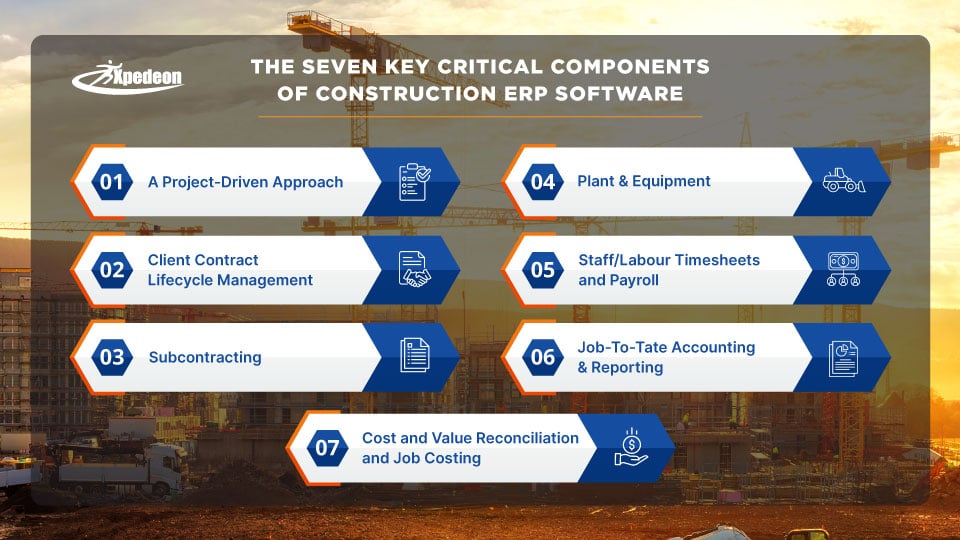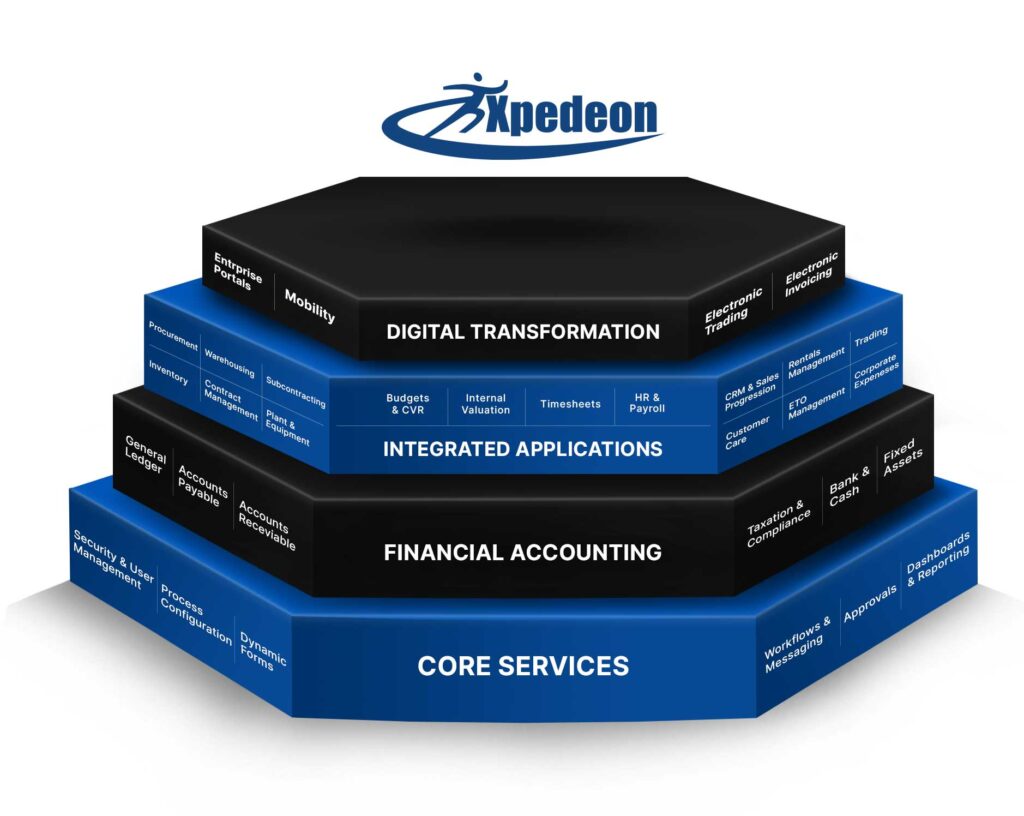Enterprise Resource Planning (ERP) systems have been widely used across many industries. They are known to eliminate manual processes and reporting, create tremendous efficiencies, save time, and reduce operational overheads. However, standard and generic ERP systems cannot fulfil the construction industry’s needs irrespective of their tier. While they can help with some of the standard processes, they cannot address some of the specific demands on construction processes. Therefore a purpose-built Construction ERP Software is essential for the industry.

We talk about some of the must-have features and components in a construction ERP with this context.
1. A Project-driven Approach
Profitability and margins are tracked for an individual contract in a construction organisation. Therefore, an essential feature of the Construction ERP Software solution is that it must be able to capture every transaction for a project.
This facilitates reporting commitments, costs, and revenues for a project seamlessly without manually splitting information for reporting. In financial accounting, every ledger entry must be tagged to a project rather than create ledger accounts for each project individually which often becomes cumbersome.
The downside of not having this feature is that most organisations spend countless hours understanding project costs and profits and rely on manual spreadsheets and reconciliations.
2. Client Contract Lifecycle Management
This is one of the most critical components required by the industry as it directly impacts the revenue of a construction project. Revenue for construction projects is driven by contracts that may adopt forms such as:
- Bill of Quantity (BoQ) Based Re-measure of Lump Sum Contracts
- Milestone Based Contracts
- Cost Plus or Defined Cost Contracts
- Plot and stage based values in case of house-building contracts
Additionally, many other terms and conditions need to be complied with and tracked, such as Advances, Retention and Defect Liability Periods. The solution should provide features to enable efficient tracking of these conditions and provide reporting per-site basis and job-to-date values.
A vital component that a construction ERP software must provide is to manage Scope Changes and Variations. Significant margin erosion and cash-flow destruction can occur without effective management and control over change.
Therefore, a construction-specific solution must enable organisations with comprehensive capabilities to manage the entire Contract Lifecycle, including scope change and variation, and the ability to raise Applications for Payment based on project progress and record client certificates.
3. Subcontracting
Subcontractor Management and comprehensive administration of their Work Orders is crucial on construction contracts. Broadly speaking, the construction ERP must provide the following features:
- Subcontractor Database Administration
Manage a database of subcontractors with up-to-date information on their insurances, certifications and accreditations and licenses, etc. Due to the compliance complexities, there must be a proactive way to manage expiry events for this kind of information.
- Enquiry, Price Comparison and Order Placement
Floating RFQs, receiving and comparing quotes based, and selecting the best subcontractor for a particular job.
- Variation and Scope Control
Manage the subcontractor’s requests for variations and track their lifecycle until agreed or rejected and impacting project budgets as necessary.
- Managing Applications, Certificates and Retention
A seamless process to receive applications for payment, conduct certifications, and issue payment certificates. This component must track retentions per work order and project.
4. Plant & Equipment
Delivering construction projects usually involves using internally-owned plant and equipment and hiring in items when not readily available. The solution must provide extensive features to maintain the database of owned-plant as well as the ability to manage deployments to various project sites to maintain optimum utilisation levels.
The construction ERP software must also provide the capability to track utilisation of plant items at project sites and provide the ability to hire-charge projects for accurate job costing.
Owning equipment also means that you will have to maintain it. Therefore, the solution must provide features and components to undertake planned and reactive maintenance and track these costs.
5. Staff/Labour Timesheets and Payroll
The construction ERP must provide an effective time tracking system through timesheets duly integrated with payroll processing. The cost of staff and labour are correctly costed to individual projects. Additionally, if the system can help plan and manage the effective utilisation of staff and labour, it would help create additional efficiencies. Managers and accountants spend an excessive amount of time and effort in splitting payroll costs into individual projects. Significant efficiencies can be achieved by having a proper joined-up process to address this. This feature is often overlooked by most companies, resulting in a lot of manual work and supporting spreadsheets.
6. Job-to-date Accounting & Reporting
Construction projects often span fiscal years, and performing effective job-costing and monitoring necessitates job-to-date cost reporting. Accounting systems must be able to report figures for individual jobs irrespective of the fiscal years concerned. Furthermore, construction ERPs must provide the ability to view liabilities by the project for elements such as retentions, payables etc.
An integrated ERP solution should ensure that all costs for a project are visible at the earliest point of visibility and accrual. This is a crucial factor that would drive accurate and realistic cost reporting for projects.
7. Cost and Value Reconciliation (CVR) and Job Costing
A robust cost and value reconciliation component must be available that enables QSs and project managers to view their project costs cleanly and concisely. Drill-downs to additional levels of detail and ultimately to source transactions are a mandatory requirement from a traceability point of view. The CVR system should be able to report the following information for different cost groups as applicable:
- Budget at Start, Changes to Budget and Current Updated Budget
- Cost Commitments made on the project, e.g. Purchase Orders and Subcontract Work Orders
- Effect of Variations and Scope Change
- Accrued Cost to Date
- Remaining Cost to Complete
- Cost at Completion Forecast
It should enable managers to assess variances on a “To Date” and “At Completion” basis to understand margin movements and whether a project will be ultimately profitable.
This information would enable the management of construction organisations to make tactical decisions in areas where a project is likely to lose money and mitigate any project issues.
The Xpedeon Solution
Xpedeon is a purpose-built ERP Solution for the Engineering and Construction industry. Matured over 25+ years across multiple geographies and a wide array of business types, it provides detailed and integrated functionality to address all critical components and elements of a construction business. It is fully integrated by design and does not require any partner applications or bolt-on solutions, creating a seamless experience for our users.

Would you like to know more about how Xpedeon can help supercharge your business? Fill out the form below, and one of our experts will be delighted to get in touch with you.
Share this Post

